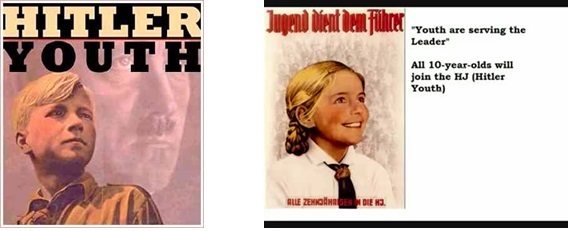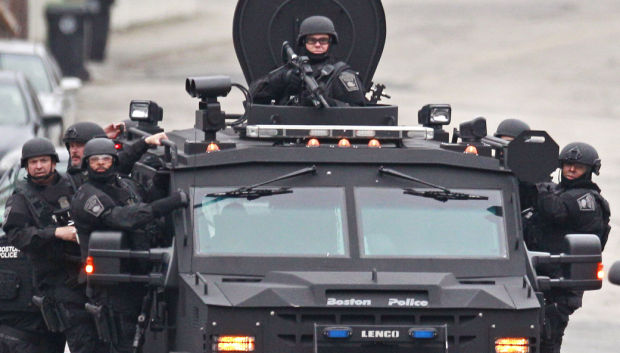« Farm restoration – a Downeast Maine story | Home | End Games of Modern Civilization: false flag scare strategies and global cultural revolutions »
Polarization in crisis: Nazi Germany and US today
By Karl North | March 3, 2021
Anna Segher’s short stories and especially her novel of political imprisonment and escape, The Seventh Cross, explore a progressive fracture of German society in the 1930s caused by the rise of the Nazi party. Reading her painstaking descriptions of where the ripple effects of the polarization catch individuals and whole social networks evokes constant parallels with a similar phenomenon with deep historical roots in the US, which multiple crises have accelerated in recent years. This essay will try to identify those parallels and thus improve understanding of current events.
Setting the stage
Most societies since the rise of civilization have been ruled by wealthy and powerful elites. They have used the time-tested tool of divide-and-rule to polarize the masses that they exploit into two or more groups who are persuaded to divert the blame for their suffering from the rulers themselves to each other. To achieve this goal, elites use their control of information to indoctrinate each group with competing fictional narratives, and eventually enlist one to destroy the other. In this way, elites maintain control over the masses they exploit. For example, ever since the rise of the bourgeois state, elite propaganda has tried to align small business and farmers as a petit bourgeoisie against the working class. Thus, in the US today, small retailers on Main Street have joined the Republican “business” Party despite being ruined by monopoly capital in the form of big box stores that remove shopping to peri-urban malls. And farmers generally are persuaded to vote Republican while many have been squeezed into bankruptcy by corporations and banks that exert monopoly control over farm inputs and crop purchases.
In the US, the original divide-and-rule strategy was what one politician (Ron Paul) has the honesty to call “the two-party dictatorship”, where each political party serves ruling class dictates in all the essentials, and the rules of the campaign game effectively forbid third parties from winning. Hence, governance in the US (and most of the Western world) becomes a stage show called democracy where politicians pretend to serve the people while mostly serving the ruling class. To put it crudely, liberals think the system will work if they just try harder, and conservatives think everything will be fine if government simply stops interfering with business. As one citizen of a non-Western nation put it, “the difference between us and the West is that we know our system is not a democracy”.
Societies under elite rule are prone to bouts of crisis and revolt as exploitation intensifies. Under unrestrained capitalism, as practiced most clearly in the US, the goal of maximizing private profit whatever the cost tends to trump all other factors that might affect economic and political decisions in a more civilized system. When such social systems enter a crisis phase, elites intensify divide-and rule tactics. The extreme form of polarization in the US today is partly a ruling class creation in reaction to a deepening crisis of de-industrialization, imperial decline, debt financing and economic shrinkage whose underlying cause is global resource depletion.
In the Germany of the 1930s that Anna Segher described, polarization had progressed much farther than in today’s US. In the following sections I will describe the Germany as Segher saw it, then the polarization in the US today, and look for precursors in the latter that parallel what happened in Germany.
Postwar Europe
A war whose mainly imperial objectives had decimated populations on all sides, followed a decade later by a great economic depression, had discredited traditional elites and led to the rise of labor and other movements to fight for the interests of the common people. In the nations of the victors, by the 1930s socialist parties had gained power – the Front Populaire in France and the Labor Party in Britain. Defeated Germany, struggling under exorbitant war reparations, experienced economic stagnation, hyperinflation and widespread poverty. The National Socialist or Nazi Party offered a total program of economic reconstruction under government control, a minimal economic safety net, suppression of all opposition and patriotic revival that appealed to the devotion to order and regimentation in German culture.
Nazi Germany
Despite the existence of a strong labor movement, the Nazi Party gained a majority and control of the government, created several layers of social control, groups to operate at different levels to build a totalitarian militaristic state that would carry out the program and suppress all opposition. The SS was the highest level of police with the SD as its intelligence arm. The Gestapo was the secret police within the SS, eventually charged with rounding up “untermenschen”, categories of people deemed undesirable in German society, for imprisonment and slave labor in concentration camps. The SA or “brownshirts” was a paramilitary organization used to ferret out opponents and their organizations for imprisonment, which drove most opposition underground. The Hitler youth was an organization among whose functions was to keep watch for opposition and to snitch on their politically wayward neighbors and parents.
In such a tightly controlled society, the escape of seven inmates from a political prison, which is the theme of Seghers’ story, was a major symbolic victory for the opposition, so the authorities suppressed the news until most of the escapees had been captured. The escape could only succeed with the full support of an underground network. The escape therefore created a rapidly widening ripple effect in local society, like a stone thrown into a pond. All family and former associates of the escapees came under investigation and threat of imprisonment for potential collaboration to help the inmates navigate a path to safety. All escapees were recaptured but one. Much of the story revolves around his dangerous and tortuous path toward eventual freedom in the Netherlands. People who helped him in any way constantly were compelled to weigh the risks to themselves and family, as discovery of any part of the assistance network led to imprisonment and torture. Thus, the escape created a dilemma that split family members and friends, and exposed and dramatized the covert polarization of German society. It also demonstrated how totalitarian methods achieve social control through fear.
The US today
In the new millennium, the deepening crisis in the US that I outlined earlier remained unaddressed by government and ignored or obfuscated in the mainstream media. The result was growing disenchantment in the public with the pretend democracy of alternating two-party rule and growing distrust of the corporate media that consistently concealed the trend. In the 2016 election, the Trump campaign saw an opportunity to capture a constituency by directly voicing the most basic concerns of the public. Trump denounced the export of much of the industrial economy that had destroyed the standard of living of a large part of the wage-earning public. He condemned the waste of federal revenue on serial wars that delivered no benefits for most people. He criticized NATO. So doing, Trump broke with taboos that most politicians and media had respected for decades on issues potentially harmful to the interests of power elites.
Agents of the power elite in Washington foiled almost all efforts of the Trump administration to deliver on its agenda, but the agenda itself – to repatriate the troops, restore US industrial might, and defund the harassment of Russia on her borders – was dangerous and could not be allowed to stand. With a goal of discrediting the president and his agenda, a more aggressive polarization effort was launched. The intelligence establishment enlisted a willing Democratic Party, a hotbed of identity politics, in a project to discredit the Trump administration with a particular focus on the president’s violations of political correctness toward discriminated groups, and by extension, purported racism and other discrimination in his growing electoral base. Backed by a corporate media that dropped any remaining pretense of neutrality, the Dems tried to reduce the economic problems facing large segments of all identity groups to one of disrespect of minorities. To the exclusion of more basic issues, it championed the cause of minorities against an enemy, the Trump base, portrayed as racist, white male “deplorables”.
On the other hand, the Trump presidency, having never been able to deliver on its promises, has served as a false hero for conservatives who became disenchanted with standard Republican politics
Once this fault line of divide-and-rule was effective in diverting electoral politics from the class warfare that is destroying the living standard of large majorities of all identity groups, the goal became one of crushing the Trump presidency and suppressing dissent from the new polarization narrative. Supported by Dem office holders in several states, violent protests against police and property by corporate funded Black Lives Matter and Antifa “revolutionaries” left neighborhoods in ruins in cities across the country. Capitalist elites funded these movements for the same reason they funded the Tea Party movement several years ago – they enlisted ordinary citizens as useful idiots in exercises in false consciousness that deflected protest from the real causes of people’s suffering.[1]
In sum, ruling elites have effectively polarized society into groups that they have dressed in new clothes of false consciousness that deflect awareness of who is to blame for their plight. In effect, the emperor’s new clothes are now worn by the masses.
Parallels
Given the situation described above, what are the signs that the US is moving toward a society similar to the Germany that Anna Segher depicted: a totalitarian one-party state, institutionalized suppression of opposition and a widespread climate of fear that effectively achieves strict obedience?
If the 2020 electoral victory over the Trump presidency is an indicator, the new polarization may be working temporarily. But in the process, it left the two-party “democracy” in disarray and its narrative increasingly discredited. The Trump presidency hijacked a part of the Republican Party into a radical agenda that neither party had dared voice for decades. The unabashed mainstream media support for the Democratic Party further eroded the trust in the system and began to normalize the idea of a one-party state.
Another sign is the calls for a war on internal dissent, already given legal status nearly twenty years ago by the so-called patriot acts. Billionaires who control powerful internet media are openly suppressing dissent from the establishment narratives.
Questionable official narratives and directives on questions such as electoral fraud, climate change and the corona virus epidemic are supported by liberals and the now ascendent Democratic Party administration, which has politicized these issues. Clashes over these questions have split friends and families. Signs are appearing that the US is becoming a Nation of snitches: authorities have encouraged people to report violators of questionable directives and even denounce them to their face. Along with the suppression of dissenting views in the media and the attack on dissenters, including employees fired, these developments suggest a progression toward a climate of fear and strict obedience to a party line that is evocative of 1930s Germany.
All the signs noted above augment an existing creeping trend toward a police state for twenty years. 9/11 and the War on Terror yielded the Patriot Acts that legalized unlimited detention of citizens without trial. Police in the US are now equipped and trained to act like an occupation army, and have resorted increasingly to police violence and repressive curfews and lock-downs in isolated instances. Authorities used the Boston marathon bombing, a crime never really solved, to test out and habituate a million-fold urban population to a lock-down and a frightening and sinister house-to-house invasion of privacy by heavily armed militarized personnel. And in January 2021 we saw the choreographed spectacle of Congress meeting behind barbed wire with 25,000 troops protecting the Capitol.
The moves toward a surveillance state in the US, although not as widespread and draconian as the constant roundups for questioning and sometimes torture that Segher describes in Germany in the early 1930s, are clearly gathering momentum.
Conclusion
The example of Nazi Germany suggests that as a crisis of society intensifies, strategies of divide-and-rule by simple polarization no longer work. Then one pole becomes the permanent governing party and everyone in the other pole is designated as untermenschen and driven undergound, imprisoned or even exterminated. The evidence I have presented proposes the prospect of a similar outcome in the US.
[1] More evidence of molding of false consciousness: Oligarchs like the Koch brothers have promoted authoritarian religious fundamentalism to the point where it governs the collective consciousness of nearly half of US citizens, who become foot soldiers waging war against science and voting for public policies that drive the country toward fascism. See my paper, What is Fascism
Topics: Political and Economic Organization, Social Futures, Peak Oil, Relocalization, Uncategorized | No Comments »


